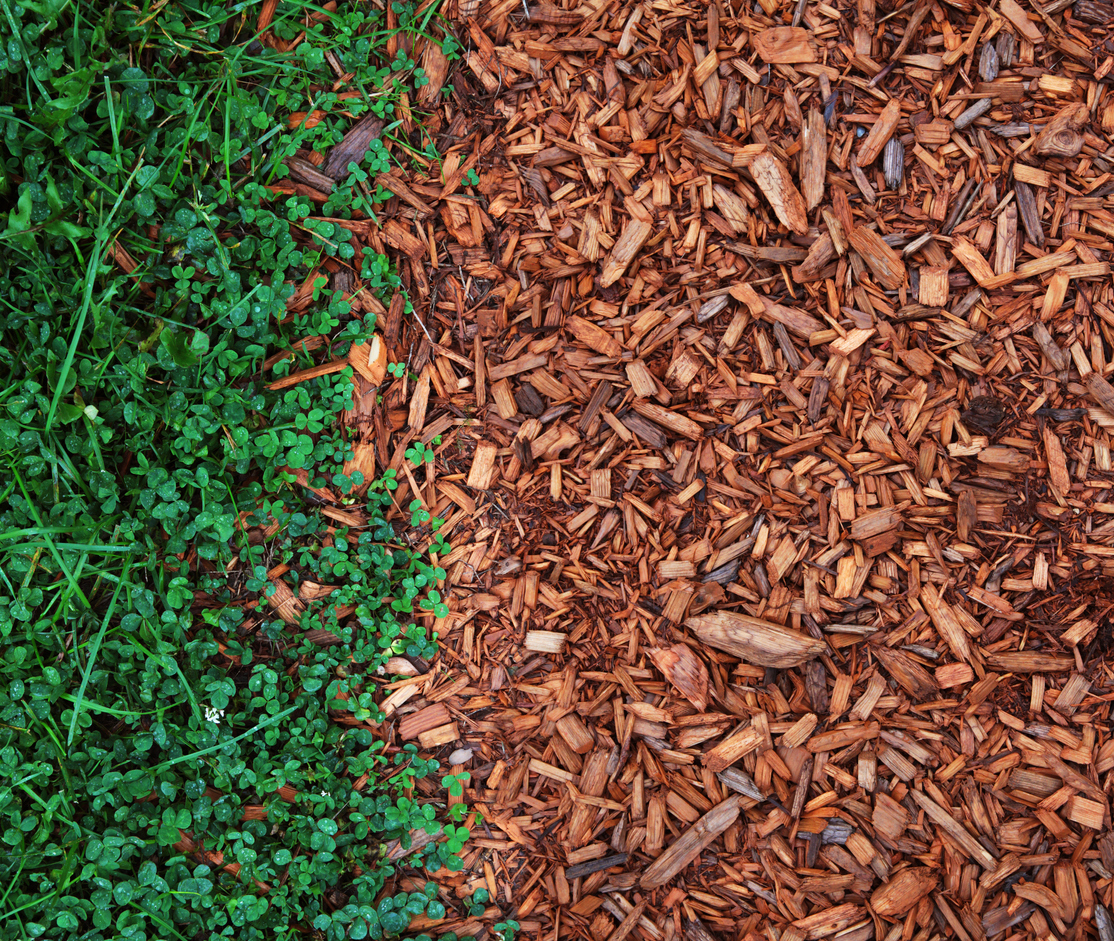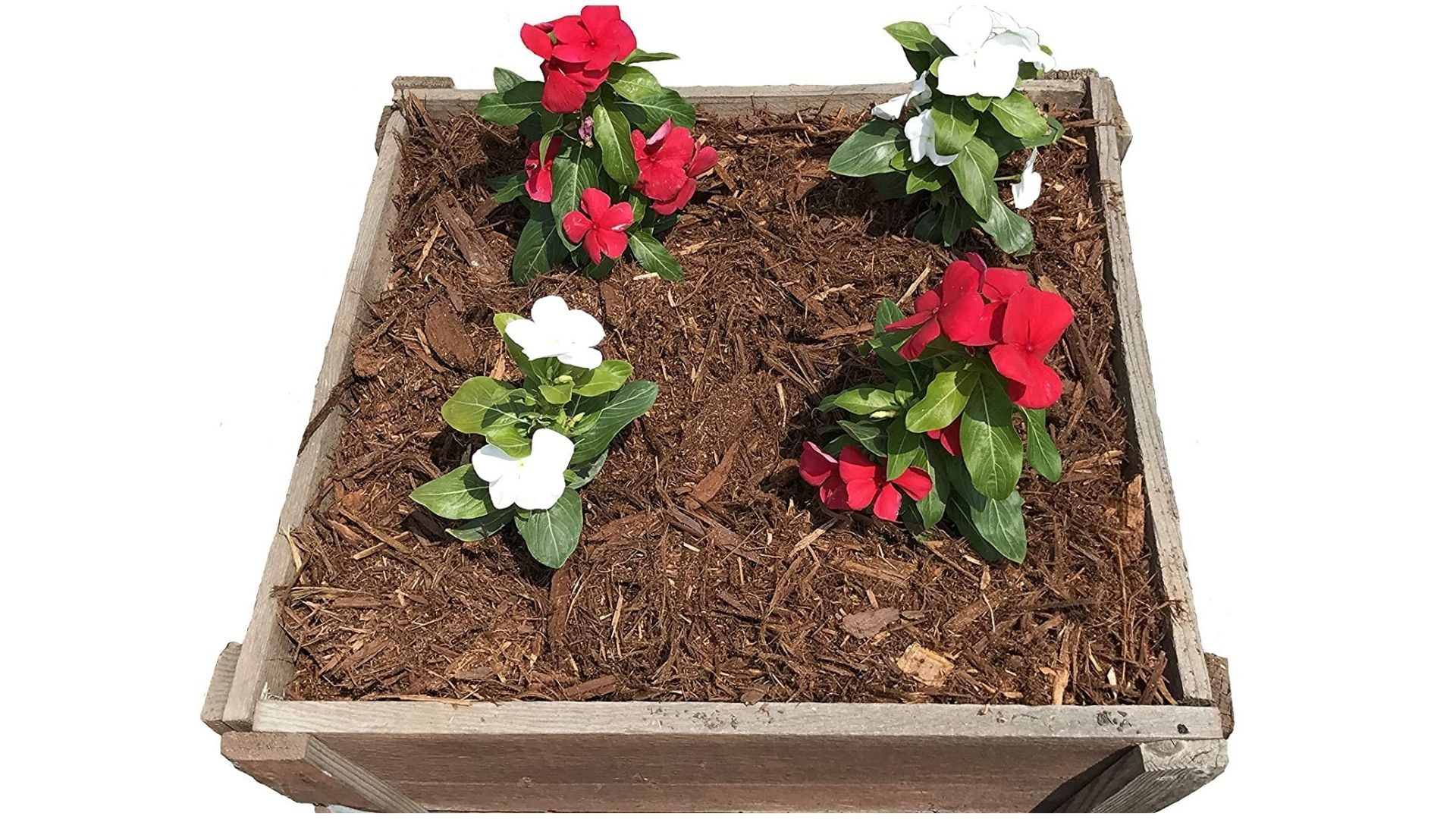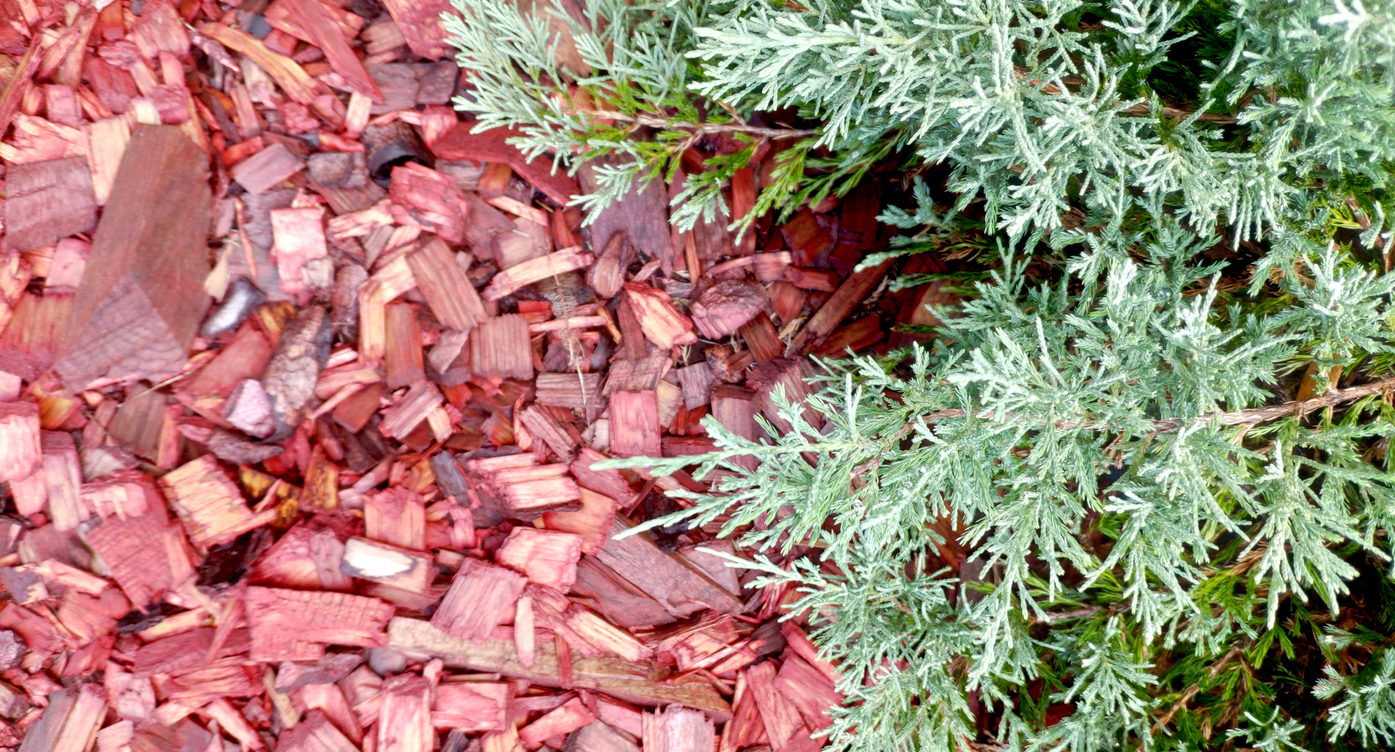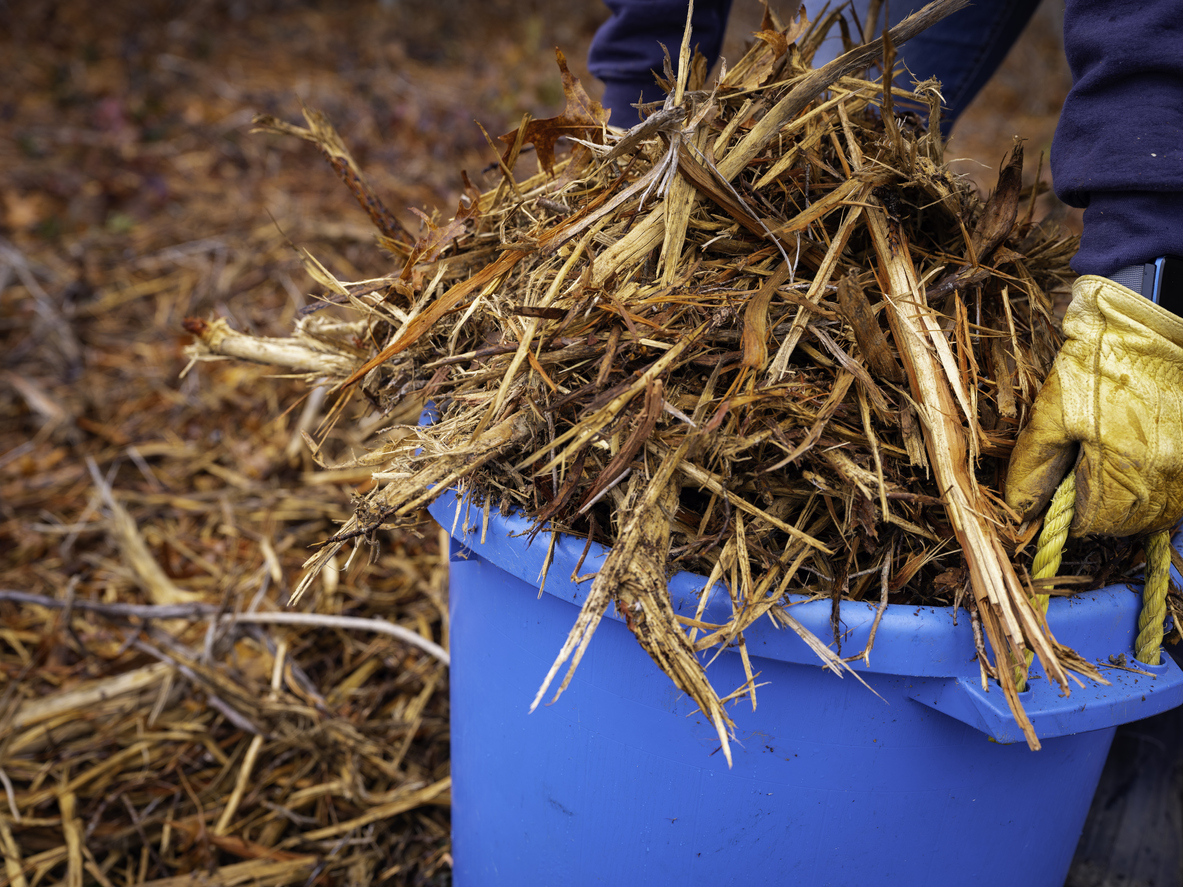

We may earn revenue from the products available on this page and participate in affiliate programs. Learn More ›
Derived from trees such as western red cedar (Thuja plicata), eastern red cedar (Juniperus virginiana), and white cedar (Thuja occidentalis), cedar mulch is available either in chips or shreds. It reportedly lasts longer than other mulches, as well as being fragrant and repellent to insects.
Helpful at adding more nutrients and retaining moisture, it’s important to be careful where you place that mulch. Always keep mulch at least 6 inches away from the trunks or stems of plants to avoid rotting them—and to avoid providing cover to rodents and slugs that would like to feast on them. Keep reading to learn more about cedar mulch.
RELATED: 16 Types of Mulch for Landscaping and Gardening

1. It provides a long-lasting result for your beds without requiring much maintenance.
Cedar mulch reportedly takes longer to break down than other mulches. For western and white cedar this may be partly due to a chemical called thujaplicin, which is resistant to bacteria and molds. Plus, white cedar is supposed to be resistant to the artillery fungus which sometimes invades other mulches. Therefore, cedar shouldn’t need to be replaced as frequently as other mulches that assimilate into the soil more quickly.
Perhaps due to that longevity, cedar generally costs more than hardwood mulches so you will need to weigh that expense against the benefit of less maintenance. Some sources also report that cedar mulch makes the ground under it more acidic. While it’s not extremely more acidic, but perhaps it’s enough to be detrimental if your soil’s pH number already is on the low side.
RELATED: The 8 Best Mulch Options for Your Landscaping Beds
2. It adds more nutrients to the soil.
The breakdown of natural materials such as cedar wood adds compost to the soil, making that soil richer in nutrients such as nitrogen, phosphorus, and potassium, and micronutrients such as sulfur, carbon, and magnesium. It also leaves the soil fluffier, much like the untrodden soil in raised beds. The protective layer helps prevent erosion and wards off the hard crust which often forms on the surface of uncovered ground.
However, fresh wood chips actually can leach some nitrogen from the soil when they begin to break down. While usually just from the soil surface, only shallow-rooted plants are likely to be affected. Still, it is a good idea to add nitrogen-rich fertilizer to any soil that you intend to cover with new mulch.
3. It provides a layer of protection against insect pests.
Just as a cedar chest or a cedar-lined closet repels moths from linens and clothes, cedar mulch can fend off or kill such insects as cockroaches, termites, and ants. That is due to an oil it contains called thujone. On the downside, thujone may rebuff beneficial insects such as lacewings and ladybugs from garden beds.
Thujone’s toxicity may be the reason for Internet rumors that cedar mulch kills plants. But Linda Chalker-Scott, an extension horticulturist at Washington state University, reports: “there is virtually no documented evidence for allelopathic activity in either Thuja or Cedrus spp.” So while it doesn’t release chemicals that inhibit plant growth, she does point out that mulches of any sort can smother seedlings, since those smaller plants haven’t developed strong root systems yet.
RELATED: How Much Mulch Do I Need?

4. It offers a pleasant aroma and neat appearance for your gardens and landscaping plants.
Most people find the scent of cedar pleasant, perhaps due to its previously mentioned associations with old hope chests. Aroma therapists also claim it has a calming effect and sharpens the focus of those inhaling it. However, those with extreme allergies, for whom any fragrance can prove irritating, probably should avoid this particular mulch when first laid in a garden. Its odor reportedly wears off after a month or so.
Like other such coverings, cedar mulch suppresses weeds and can serve to visually unify all of the different plantings in a landscape. It also prevents soil from being splashed onto plants’ leaves, thus possibly preventing fungus problems. However, be sure you limit the mulch’s depth to 2 to 3 inches, since too much of it can smother full-grown plants as well as seedlings.
5. It helps the soil in your garden and landscaping beds to retain more moisture.
As with other mulches, cedar can keep the soil beneath it moist by preventing evaporation, thus reducing the necessity for frequent irrigation. The humus that mulch eventually produces also will help sandy soils retain more water as well as improve the drainage of clay soils.
However, it’s a good idea to check the ground under the mulch periodically to verify that it is keeping damp. Mulches that are constantly exposed to hot and arid conditions may eventually dry out and form a waterproof layer on their surface that prevents rainfall from penetrating the soil. Since wood mulch can be highly flammable when dry, it’s not a good choice in areas where wildfires are common.

6. It improves the temperature of the soil throughout each season.
Cedar mulch helps improve soil temperature throughout the year. When applied after the soil freezes in winter, mulch helps keep the ground frozen during temporary winter thaws so plants aren’t deceived into beginning to grow too early. This also prevents heaving of soil that can uproot perennial plants. That blanket also protects a garden from the most extreme cold to allow growing those plants which are only marginally hardy in your zone.
Mulch left on the garden all year evens out abrupt temperature swings, slowing the rate at which the ground both cools in fall and warms in spring. Although that reduces stress for mature perennials, avoid applying cedar to areas which need to heat up quickly for the sowing of seeds in spring. Wait until seedlings are growing well before applying mulch intended to keep their soil cool in summer.
RELATED: 15 Things to Know Before Laying Landscape Fabric in Your Yard
